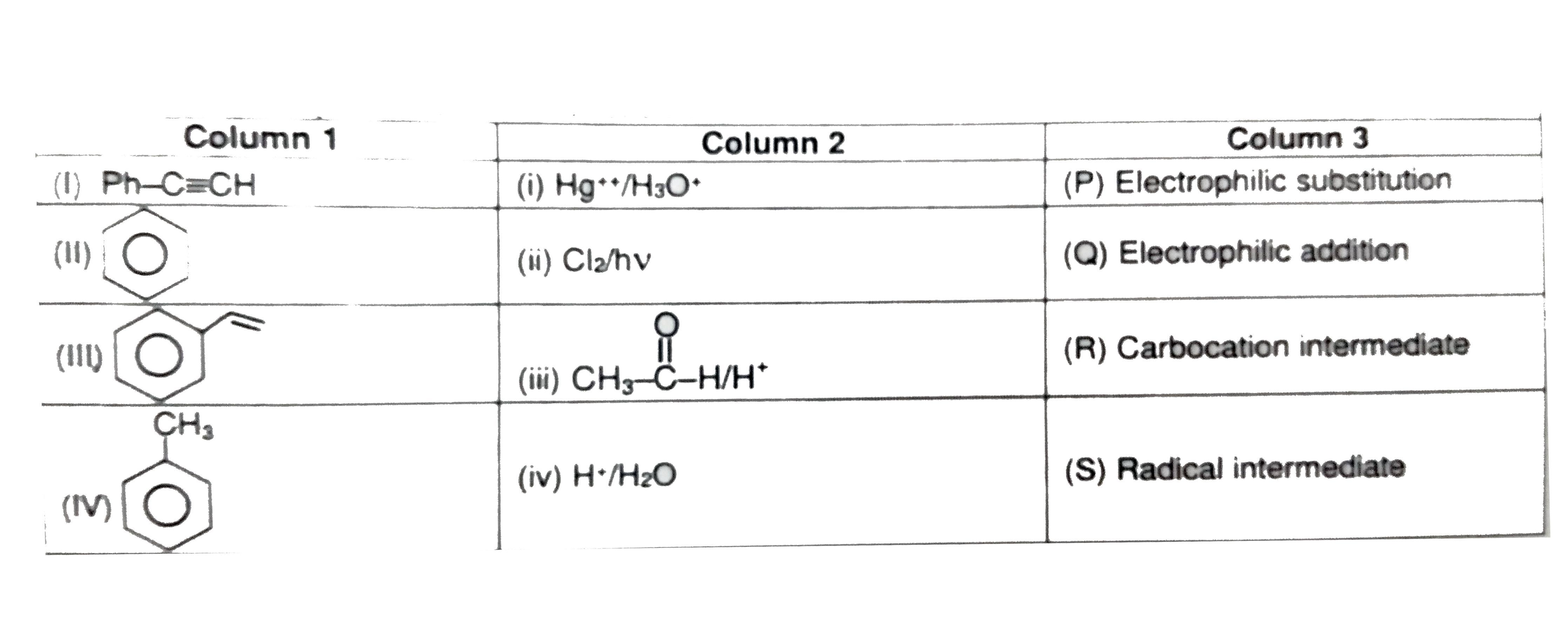Ketones and 1∘ amine react to form
Amides
Oximes
Urea
Schiff's bases
The correct Answer is:4
To solve the question of what product is formed when ketones react with primary amines, we can follow these steps:
Step 1: Understand the Reactants
We start with a ketone and a primary amine. For example, let's consider acetone (a common ketone) and ethylamine (a primary amine).
Hint: Identify the structure of the ketone and primary amine you are working with.
Step 2: Identify the Reaction
When a ketone reacts with a primary amine, the reaction typically involves the formation of a compound known as a Schiff base. This occurs through a condensation reaction where the amine attacks the carbonyl carbon of the ketone.
Hint: Remember that the reaction involves the carbonyl group of the ketone and the amine group of the primary amine.
Step 3: Draw the Reaction Mechanism
1. The nitrogen atom of the primary amine attacks the carbon atom of the carbonyl group (C=O) in the ketone.
2. This leads to the formation of a tetrahedral intermediate.
3. The tetrahedral intermediate then loses a water molecule (dehydration) to form the Schiff base.
Hint: Visualize the reaction mechanism to understand how the water molecule is eliminated.
Step 4: Write the Product Structure
The product formed is a Schiff base, which has the general structure R1R2C=NR3, where R1 and R2 are alkyl groups from the ketone, and R3 is the alkyl group from the primary amine.
For our example, the product would be:
- From acetone (CH3)2C=O and ethylamine (C2H5NH2), the product will be:
- (CH3)2C=NH(C2H5)
Hint: Ensure you correctly identify the groups attached to the nitrogen in the final product.
Step 5: Conclusion
Thus, the reaction of a ketone with a primary amine results in the formation of a Schiff base.
Final Answer: The correct answer is D) Schiff base.
---
We start with a ketone and a primary amine. For example, let's consider acetone (a common ketone) and ethylamine (a primary amine).
When a ketone reacts with a primary amine, the reaction typically involves the formation of a compound known as a Schiff base. This occurs through a condensation reaction where the amine attacks the carbonyl carbon of the ketone.
1. The nitrogen atom of the primary amine attacks the carbon atom of the carbonyl group (C=O) in the ketone.
2. This leads to the formation of a tetrahedral intermediate.
3. The tetrahedral intermediate then loses a water molecule (dehydration) to form the Schiff base.
The product formed is a Schiff base, which has the general structure R1R2C=NR3, where R1 and R2 are alkyl groups from the ketone, and R3 is the alkyl group from the primary amine.
- From acetone (CH3)2C=O and ethylamine (C2H5NH2), the product will be:
- (CH3)2C=NH(C2H5)
Thus, the reaction of a ketone with a primary amine results in the formation of a Schiff base.
Similar Questions
Knowledge Check
Secondary amine react with carbonyl compound to give:
AImineBSchiff's baseCHydrazoneDEnamineWhen primary amine reacts with chloroform in ethanolic KOH then product is
Aan isocyanideBan aldehydeCa cyanideDan alcoholHydrocarbons are formed when aldehydes and ketones are reacted with amalgamated zinc and conc. HCl. The reaction is called
ACannizzaro reactionBClemmensen reductionCRosenmund reductionDWolff-Kishner reduction.
How do primary secondary and tertiary amines react with nitrous acid ?
View SolutionWhen primary amine reacts with chloroform in ethanolic KOH then product is
View SolutionNaOH reacts with Zn to form
View SolutionA primary amine, RNH2 can be reacted with CH3−X to get secondary amine, R−NHCH(3), but the only disadvantage is that 3∘ amine and quaternary ammonium salts are also obtained as side products. Can your suggest a method where RNH2 forms only 2∘ amine?
View SolutionPredict stereochemistry of product when d and l-amine reacts with l-acid:
View Solution

